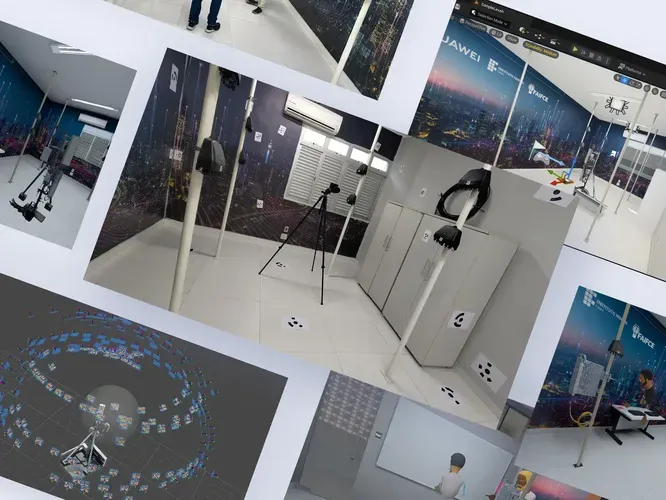Table of Contents
Overview
IFCE-HUAWEI is a comprehensive virtual reality simulation designed for training and education. It integrates real-world scanned environments with multiplayer features to create a collaborative, immersive learning platform.
👨💼 Role
3D Environment Artist & Network Developer
❓ Problem
- Required high-fidelity environments for immersive training.
- Needed real-time interaction among multiple users.
🎯 Goal
- Recreate educational environments using LIDAR and photogrammetry.
- Enable multi-user VR interaction with smooth synchronization.
✨ Solution
Environment Creation
- Captured real environments using DSLR, LIDAR, and drones.
- Processed models with Agisoft Metashape and Blender for cleanup.
Multiplayer Implementation
- Integrated Photon to handle real-time networking and player synchronization.
- Optimized for latency and smooth experience.
Real-World Accuracy
- High attention to detail in modeling ensured realistic training scenarios.
- Used actual institutional settings to provide familiarity and relevance.

This flowchart outlines the complete workflow from classroom scanning with DSLR/LIDAR to multiplayer VR deployment, highlighting the integration of real-world objects, spatial accuracy, and networked interaction.
This flowchart outlines the complete workflow from classroom scanning with DSLR/LIDAR to multiplayer VR deployment, highlighting the integration of real-world objects, spatial accuracy, and networked interaction.
⚙️ Challenges and Learnings
- Managing large datasets from LIDAR and photogrammetry required careful optimization.
- Balancing network performance with graphic fidelity was key.
- Hands-on experience with Photon and real-world data capture was invaluable.
✨ Final Thoughts
- The IFCE-HUAWEI project exemplifies how cutting-edge scanning and networking can enhance educational VR.
- Lessons learned here will inform future work in simulation and remote collaboration.

.CXYTAsq_.webp)
.UEmvBTPM.webp)
.q5XJ6MAo.webp)
.DNpZbh4o.webp)
.C1C4wBnS.webp)